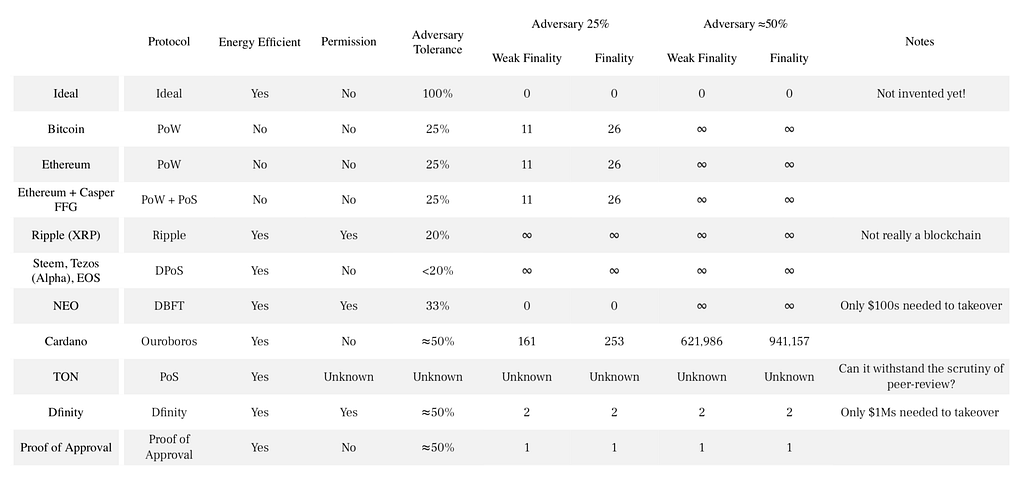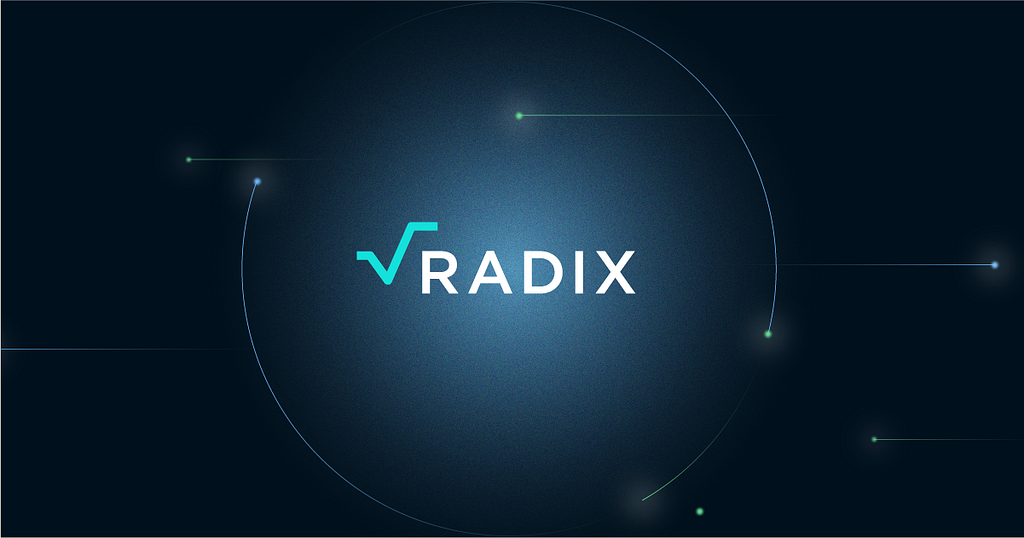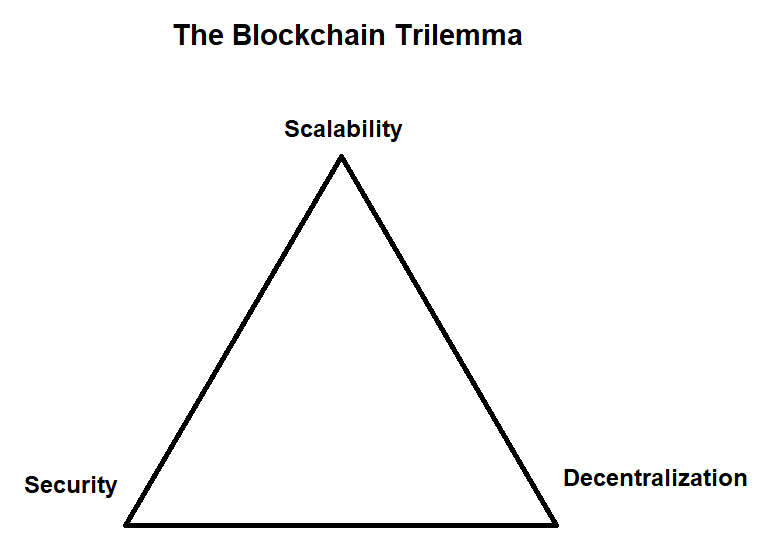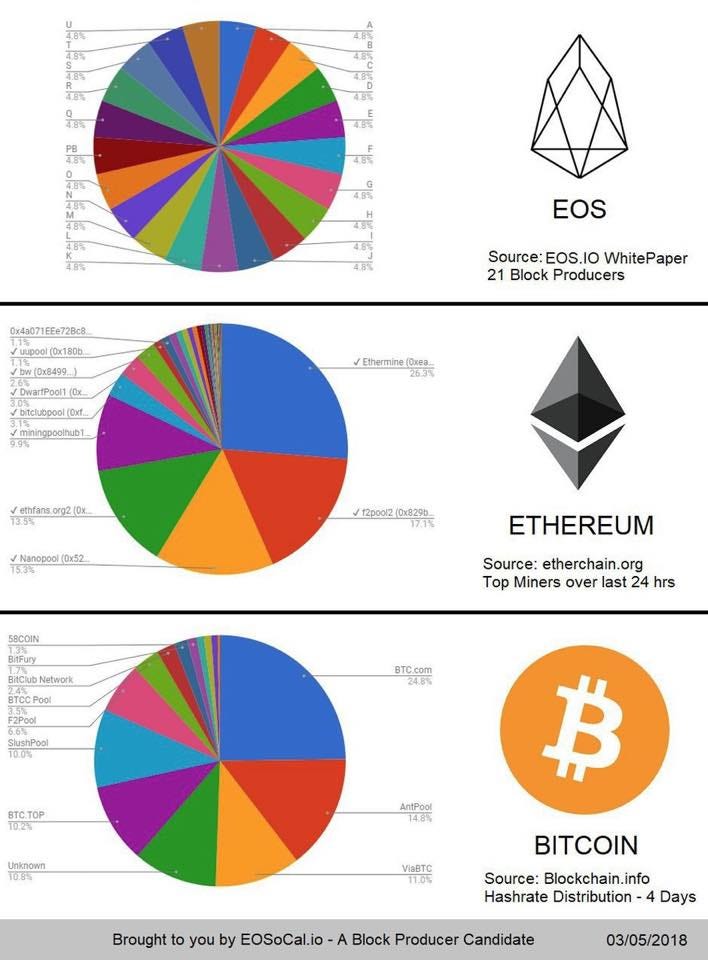Latest news about Bitcoin and all cryptocurrencies. Your daily crypto news habit.
I have no vested interest in Radix, I am just fascinated by the project.
Radix is a speedy and scalable alternative to Blockchains and DAGs. As a formal definition Radix is a public trustless decentralized ledger (DLT).
Think of it as a Blockchain without blocks (the data structure is called “Tempo”) that is based on a consensus protocol completely different from anything you saw before: logical time.
Prior to the creation of Radix, the predominant technology for building and deploying DLT was blockchain, a technology that allows many computers to agree on a single version of events, without any center to the system.
But Blockchains have problems and some of them are hard to solve.
Blockchain problems
1) Scalability
The blockchain is a powerful concept as there is no one place to attack or disrupt. It provides certainty of data integrity, and trust in the transactions conducted using it. Unfortunately, it has a major drawback — it does not scale very well.
To understand the concept of scalability, think about a person who opens a website, let’s say a blog. He does not expect so many visits so he buys the basic hosting service in order to save money. In the beginning, the blog receives just a few visits, a hundred a day, and the hosting holds very well without having problems. Imagine now that from one day to another that blog becomes very famous and millions of people go to visit it, in that scenario the basic hosting can’t handle all those visitors and crashes. This is the example of a non-scalable system, which is overloaded as users increase.
Blockchains have the same problem, as long as they are used by a few thousand people they manage transactions without problems, but as soon as there is a surge in its use everything congests. Do you remember the high fees and the huge waiting times of Bitcoin in December 2017? And the Cryptokitties lunch on Ethereum? Well, then you got it.
The scalability of a Blockchain is not a simple problem to solve because in order to overcome it you always risk compromising its decentralization or security.
Imagine this “trilemma” as a triangle where only two angles can be used simultaneously: so if we want a scalable and secure Blockchain we must do without decentralization, while if we want a scalable and decentralized Blockchain we must do without security and in the same way if we want a secure and decentralized Blockchain we must do without scalability.
If we are going to analyze the projects that aspire to create scalable Blockchain with many transactions per second (such as EOS, Lisk, Tron, Achain …) we can see how they have all adopted consensus protocols (such as “Proof of Stake” or “Delegated Proof of Stake “) that in order to ensure scalability undermine decentralization by bringing power into the hands of a few entities.
2) High risk of centralization
The second big problem with Blockchain indeed is the high risk of centralization caused by dangerous consensus protocols.
Consensus protocols are a set of rules for comparing, ordering and agreeing on data conflicts that participants of a DLT have to follow. There are two types of consensus protocols: permissioned (where you need to be authorized by someone) and permissionless (where you don’t need authorization).
Permissioned consensus always existed and are used inside businesses where people are given express permission to amend and reject information in the system. Their flaw is that the consensus is not secure, it simply relies on securing the process of selecting the parties who are allowed to manage the data, rather than making the method of reaching consensus itself secure and fault tolerant.
Permissionless consensus instead was the innovation that created Bitcoin in 2009 and that allows anyone to be part in this process through a mechanism called “proof of work” (PoW) which uses computer power to figure out which is the correct version of the truth, organizing it into blocks and then chaining those blocks together to form the blockchain.
The consensus protocols are the basis for trustless and decentralized DLT, but at the same time, each consensus protocol carries with it different potential dangers.
For example, the PoW is both enormously inefficient and safe only as much as half of the total amount of computing power used to decide which data to accept and which data to reject. This can be effective for large networks where there are clear economic incentives to provide ever-increasing amounts of computing power, such as Bitcoin, but they do not work well for small or private networks where it is easy to get more than 50% of the computing power of the network. Not to mention the large energy consumption that PoW brings with it.
 Comparison of the most popular consensus protocols
Comparison of the most popular consensus protocols
To overcome the problems of scalability and excessive energy consumption, other consensus protocols have been created, among which the most used ones are the “proof of stake” (PoS) and the “delegated proof of stake” (DPoS).
PoS consensus makes you stake money to become a validator instead of requiring participants to have large computational power to verify and insert data in a block. If you will be an honest node you will receive more money back, instead, if you will be dishonest you’ll lose everything.
The more money you put in stake the more power you have and therefore the more money you make. This system is based on the assumption that it would be totally not convenient to be dishonest since you know you will surely lose everything you put on stake. DPoS is based on the same mechanism but with the difference that there are a maximum number of participants (for example 21 in the case of EOS) that are voted by the holders of the currency, where each coin is worth a vote.
The problem is that all these consensus protocols, in the long run, centralize power: to date indeed no Blockchain is 100% decentralized.
In systems with PoS, for example, we move to a mechanism where those who have a lot of money control the network and consequently make even more money and cut out other small participants.
In systems with DPoS, which are born with democratic ideals but which are actually plutocracies, quickly become cartels where nodes vote for each other to maintain control.
Bitcoin itself has mining pools that control almost 51% of the hashrate (especially China controls a lot) and Ethereum’s blockchain weigh is more than 1 terabyte making it difficult to become a new node.
Everyone has its advantages, of course, but the situation is anything but ideal.
Why decentralization matters?
The centralized approach allows faster and more decisive decisions, as well as giving the system participants a sense of clarity about the rules and their role within it. It also establishes a structure to enforce these rules.
Unfortunately, this also highlights one of the main disadvantages of centralized systems: what happens if the central authority is harmful to the system participants? There are countless examples of tyrannical governments that abuse their power. There are also many examples of groups of business leaders who make bad decisions and refuse to delegate power by making their decisions destroy these companies.
Decentralization avoids the abuse of power by the central authorities. However, this is at the cost of each participant who must be held responsible.
Moreover, for the first time ever in a meaningful way we have the ability to create probably unique digital objects that can be handed from one person to another. For the first time ever we can do that. And what did we do first? We created cryptocurrencies, an entire system of value where the value transfer does not need banks or intermediaries.
DLT is an innovation that allows you to treat the creation and transfer of value as a developer tool, as something that you can build right into your coding stack and that’s super exciting. For the first time ever in a meaningful way, we are handing people the tools for their own digital identity and digital sovereignty.
And here’s the kicker, the last bit: programmability. The ability to create logical statements that you know for a fact that once put on the ledger are going to execute exactly how you set them out to do so.And that’s the last bit, the smart contracts, the logical statements on the ledger, the decentralized applications. Those are the bits that have the farthest to go. The ones where greatest promises relies and also the greatest uncertainty. I do not yet know how they are going to change the world, but they will.
Goodbye Blockchains, Welcome Radix!
And here comes Radix.
Radix is the result of 6 years of research and development and is the solution to the problems of scalability and decentralization exposed before.
Radix is a DLT that is not a Blockchain and is not a DAG but has a completely innovative structure all of its own (Tempo) and a consensus method that allows Radix to create an extremely secure and scalable system for shared storage and access to data.
Radix has three guiding principles: linear scalability, developer delight, and true decentralization.
1) Linear scalability
To serve the world you must be able to scale to every single person and every single device simultaneously without bottlenecks. Anything short of that and you have not got a protocol that the world can rely on.
That would need to both be incredibly easy to index (to make the data structure usable), and massively sharded (cut into fragments) so as the demand of the network grew, more computers could be added to increase the throughput of the network.
Radix team realized that cutting up the data ad-hoc would not work. Instead, you need to already know how the data will be cut up. You should be able to look at any piece of data and know where it lives in the data structure without having to re-index every time large amounts of new data is added. They achieved that by pre-cutting up the data structure of the platform into 18.4 quintillion shards. They then use key reference fields, such as a public key, as a way of determining where in that shard space a particular piece of data lives.
The result of this innovation is a data structure that is able to scale linearly, without overhead, from tiny data sets to ones large enough to serve every person and business in the world.
2) True decentralization
No masternodes, no staking, no central council, no coordinator.If your protocol doesn’t work without a center then you are not building a platform for the world, you are just building a platform administered by a company.
Radix solves the problem of centralization by creating a permissionless consensus system that can be used securely in both small and large networks, secured by a property that cannot be trivially bought or faked within Radix: the passage of logical time. In addition to this, unlike other DLT systems, it does not apply consensus to every event, only to those that conflict. This allows the entire system to be incredibly efficient, even at massive scale.
The passage of logical time relies on a concept called logical clocks — in very simple terms, a logical clock is a counter. Each node on the Radix network has its own logical clock that it maintains. The only rule it must follow is that it must strictly count upwards only and has to increment by 1 its counter every time the node see an event.
In Radix, this counter is triggered for a node when it sees a valid event it has never seen before. The node must simply check its own database, then increment its logical clock, stamp the event with the new timestamp and ID and then gossip it to the network. Periodically it must make commitments to make sure it cannot lie about the order of historical events.
This passive consensus mechanism is both very reliable and incredibly power efficient as no extra energy is expended apart from to resolve conflicts.
3) Developer delight
Radix mission is to give to developers the very best tools to build and deploy DApps (decentralized applications). The internet was an enabling technology. Radix is an enabling technology to enable anything people have to build with.
The Radix platform is now in the Alpha stage of development, with a live Alpha testnet that you can connect to and try building against. Find out more here:
https://www.radixdlt.com/developers
And start building here: https://github.com/radixdlt/
Why Radix is so cool?
Imagine a world where every device, phone, modem or television can mine. Where every person can be part of the consensus mechanism of the cryptocurrency or of the community in which they believe, almost without even noticing it. To date, it is not possible: in order to be a miner of some currency you have to spend a lot of money and you have to be an expert. With Radix instead, all this will be possible.
It will be easy to mine and will be accessible to everyone: to mine you will not need to have more computer power than your “neighbor”, simply you will be chosen randomly and all sooner or later will be chosen. Thanks to the technology behind it you will not need any expensive tool, just a phone with the app on it.
A future where everyone has a voice. A green and eco-friendly future. A future where all these billions of devices we have are starting to make sense, where people from all over the world come together to create a global decentralized computer with unimaginable power.
This is the future towards which we must go against: a future where decentralization is true and not just a slogan.
Resources
Radix blog: https://www.radixdlt.com/blogRadix Alpha presentation: https://www.youtube.com/watch?v=7xc9TNKMNLYRadix whitepaper: https://papers.radixdlt.com/tempo/latest/Radix Telegram Group: https://t.me/radixdlt
Is Radix the Coolest Thing Happening in Crypto Right Now? was originally published in Hacker Noon on Medium, where people are continuing the conversation by highlighting and responding to this story.
Disclaimer
The views and opinions expressed in this article are solely those of the authors and do not reflect the views of Bitcoin Insider. Every investment and trading move involves risk - this is especially true for cryptocurrencies given their volatility. We strongly advise our readers to conduct their own research when making a decision.



